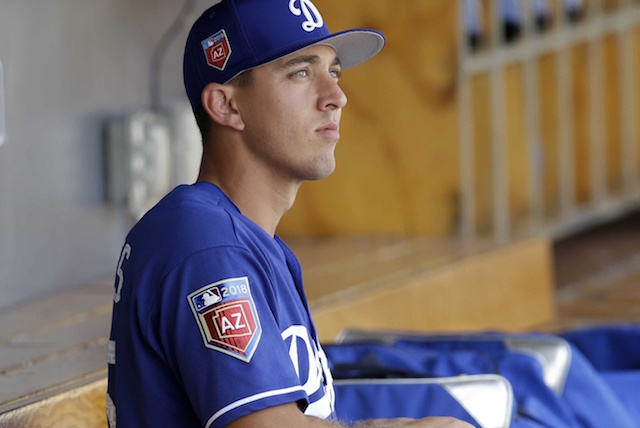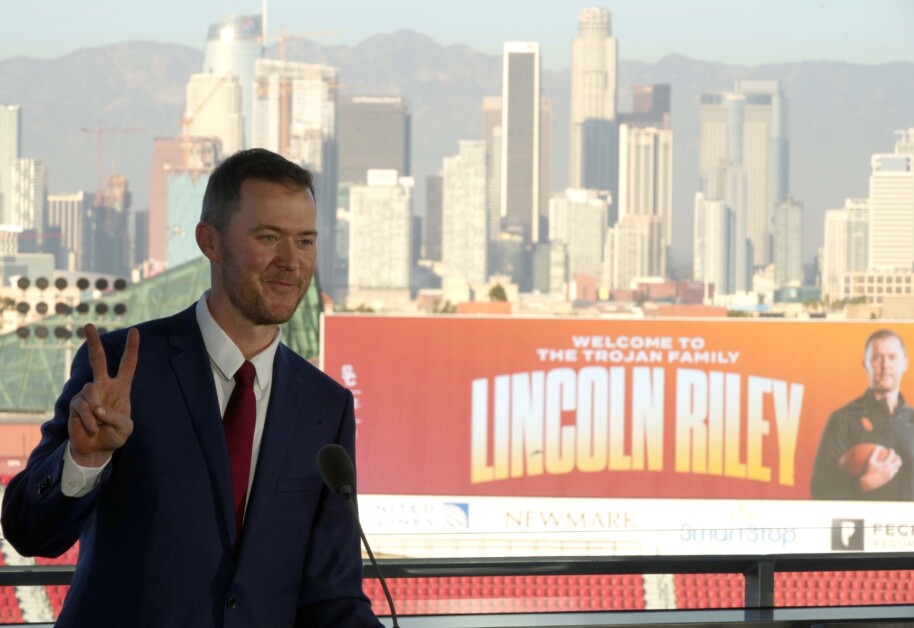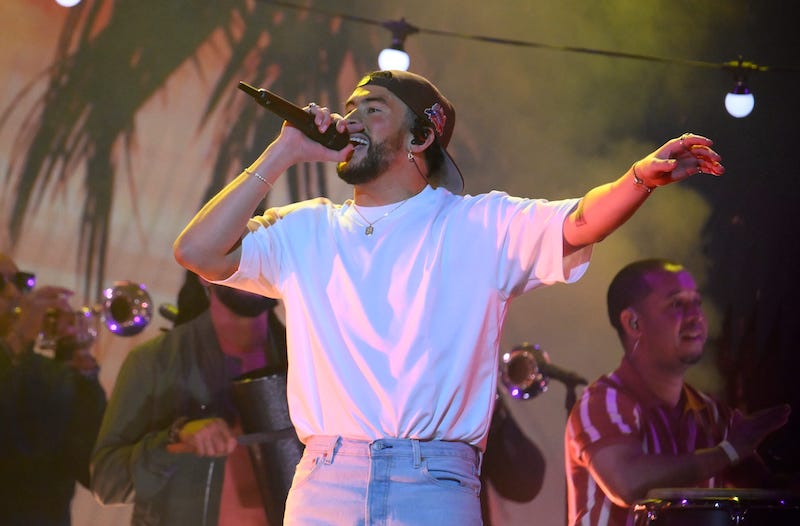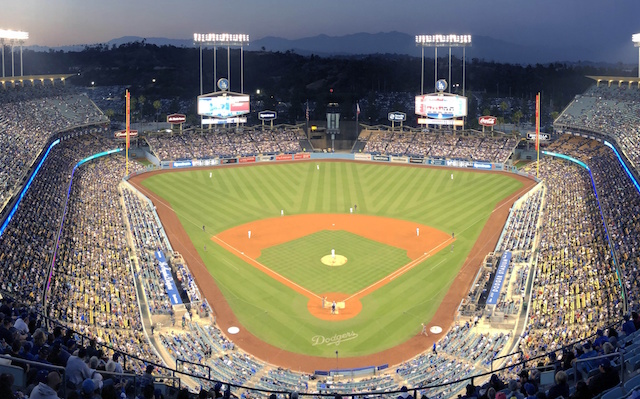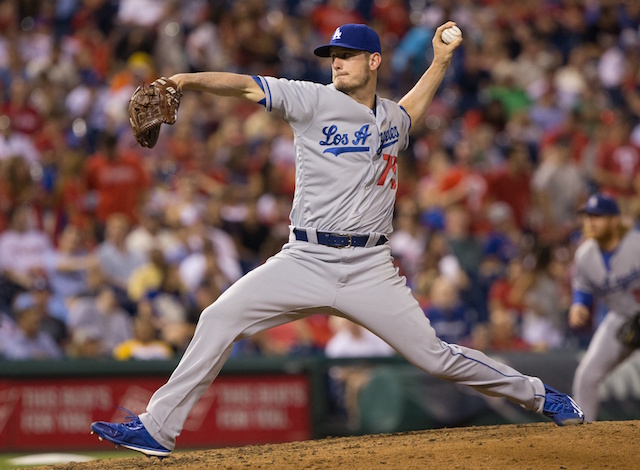In a time in which the catcher position is experiencing a seemingly league-wide drought, the Los Angeles Dodgers find themselves with another problem: they have too many catchers.
Last season, only six players at the position had more than 20 home runs. Seven had an on-base percentage over .350 and just five posted a slugging percentage over .500. In fact, every single catcher in the Majors last season combined to receive just one MVP vote, thanks to Gary Sanchez of the New York Yankees — and it was a fifth-place vote.
And yet, as the Dodgers approach the 2018 season, this dearth of catching talent is an experience they are completely unfamiliar with. Ever since upgrading the position by trading for Yasmani Grandal in 2015, the Dodgers have set out to make the backstop position one of strength and not mediocrity.
In his four seasons with Los Angeles, Grandal has averaged nearly 22 homers with an OPS around .800. While prone to hot and cold streaks, Grandal has — on the whole — remained one of the league’s better offensive catchers.
He is third in home runs, sixth in OBP and fifth in slugging since coming to LA — all the while also remaining one of the game’s better defensive catchers. Last season, he was rated the second-best pitch framer by StatCorner.
With a résumé like that, you’d assume that in a vacuum Grandal is a shoe-in for the bulk of innings behind the plate, right? It’s what Dodgers manager Dave Roberts indicated is to the be the case, but should it?
Despite Grandal’s productivity, it was 28-year-old Austin Barnes who saw the bulk of postseason innings behind the plate thanks to his ridiculous finish to the regular season. When all was said and done, Barnes hit .289/.408/.486 and clearly established himself as a threat to Grandal’s run as the Dodgers’ primary catcher.
Especially given that Barnes finished as the seventh-best pitch-framer in the league. To be fair, it’s not only Barnes that Grandal has to worry about. While unlikely to make much noise this season, there’s also Kyle Farmer.
Behind him are Keibert Ruiz (the Dodgers’ No. 3 prospect, who has appeared in five top-100 prospect lists this winter at age 19), Will Smith (who Fangraphs has rated the No. 64 prospect in the league at age 22) and Connor Wong (the team’s third-round pick in 2017)
With all that in mind, what should we expect for 2018? Can Grandal hold off Barnes for the entire season?
The more thought it’s given, the more I realize he may not have to. Why? Because Barnes could become a near-everyday player this season. Just not only as a catcher.
While Grandal is limited to the catching position, Barnes has experience at second base as well. That works out perfectly when you consider the splits of Grandal, Barnes and Logan Forsythe. (Plus, Forsythe is now needed at third base because Justin Turner broke his wrist.)
Splits against right-handed pitching in 2017
Yasmani Grandal: .250/.305/.486 (352 at-bats)
Austin Barnes: .321/.444/.459 (109 at-bats)
Logan Forsythe: .190/.315/.262 (237 at-bats)
Splits against left-handed pitching in 2017
Yasmani Grandal: .233/.320/.349 (86 at-bats)
Austin Barnes: .257/.372/.514 (109 at-bats)
Logan Forsythe: .290/.418/.452 (124 at-bats)
Now, just looking at those numbers, if you could pick two players to start against righties and two against lefties, who would you choose? Granted, these are small sample sizes, but even if we expand the sample sizes, you’d likely reach the same conclusion.
Against right-handers, you’d take Grandal and Barnes, and against lefties, you’d take Barnes and Forsythe. And it’s not even that close.
The beauty of Barnes is that he allows you to take advantage of both platoon splits because he hits well against both and plays multiple positions.
Regardless of how it all shakes out, the Dodgers have an Austin Barnes problem. And it’s a good one. It turns out, they just might have a solution as well.



